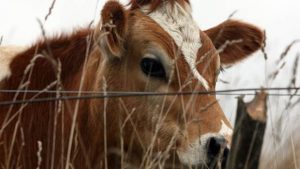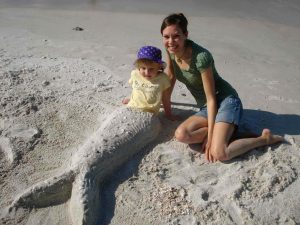Emma left this morning.
Emma has always been a special person in our lives, and especially Sorenne’s.
 When Amy was pregnant almost 10 years ago at Kansas State University, we talked about getting some early childhood education students to help out, so I could work and Amy could write.
When Amy was pregnant almost 10 years ago at Kansas State University, we talked about getting some early childhood education students to help out, so I could work and Amy could write.
Never had to post the ad.
Emma was a student in one of Dr. Amy’s French classes, noticed she was pregnant, and asked, are you going to need help with that baby?
Emma became one of our helpers.
This was in the U.S., with six weeks maternity leave, rather than Canada, with six months maternity leave (plus a whole bunch more parental leave, in Canada).
Emma now lives in New Zealand with her partner, the veterinarian, and took advantage of the long weekend to have a visit.
To watch Emma and her partner experiment and flourish over the past 10 years has been a delight.
But this story is for the dude, since he works at MPI in New Zealand, whose $3 billion beef export sector seems to be free so far of the serious new cattle disease Mycoplasma bovis.
The Ministry for Primary Industries, which is attempting to contain an outbreak of the disease in dairy cattle by a mass slaughter of more than 22,000 dairy cattle before the beginning of June, said there had been no positive results from its testing of beef animals.
The beef and dairy sectors work closely in New Zealand through dairy calf rearing and dairy grazing with about 80 per cent of premium beef cattle production originating from the dairy herd.
In response to a Herald inquiry, an MPI spokeswoman said the risk profile for M. bovis in beef farming was very different to that of dairying because of how beef is raised in New Zealand.
“Generally beef cattle are farmed extensively in pasture and are not fed risky discarded calf milk.
“We looked into this carefully and determined the beef stock at greatest risk were those that were raised in feed lots – not that common in New Zealand.”
With the support of industry good organisation Beef+Lamb, MPI had carried out some surveillance of cattle in feed lots, mostly in the South Island, the epicentre of the M. bovis outbreak.
 “The animals were tested at slaughter in order to take samples … there were no positive results,” the spokeswoman said.
“The animals were tested at slaughter in order to take samples … there were no positive results,” the spokeswoman said.
“We also consider that many dairy beef animals were tested in the response as part of our tests on neighbouring farms to infected properties. Again, no positives were found.”
Meanwhile, newly released MPI reports on M. bovis investigations since the first outbreak last July said “confluence of multiple rare events” could have allowed the bacterial disease into New Zealand, possibly as long ago as 2015.
One of the three released reports identifies seven potential pathways for the disease but finds all “improbable – yet one of them resulted in entry”.
The risk pathways investigated were imported embyros, imported frozen bull semen, imported live cattle, imported feed, imported used farm equipment, and other imported live animals. A seventh pathway was redacted from the reports along with all discussion about it, but the Herald can confirm it was imported veterinary medicines and biological products.
 MPI has opted to try to contain the disease with a mass cull of cattle on 28 quarantined properties, all but one in the South Island, because it believes it is not yet well established in New Zealand. The first outbreak of the disease was on a large-scale dairying business in the South Island. However, the MPI reports suggest it may have been introduced in mid-2016 or even earlier.
MPI has opted to try to contain the disease with a mass cull of cattle on 28 quarantined properties, all but one in the South Island, because it believes it is not yet well established in New Zealand. The first outbreak of the disease was on a large-scale dairying business in the South Island. However, the MPI reports suggest it may have been introduced in mid-2016 or even earlier.
